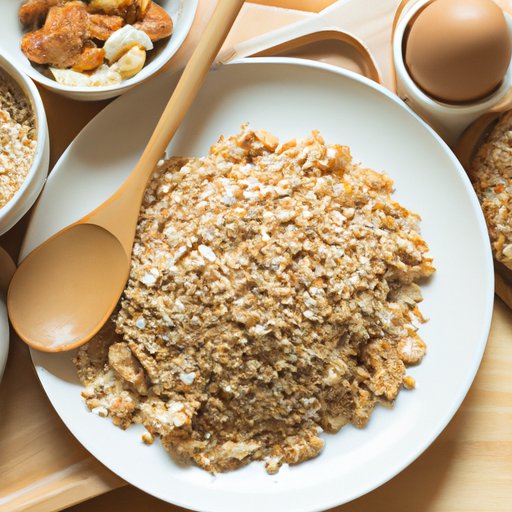
Introduction
Healthy breakfast choices are essential for both weight loss and overall health. A good breakfast can help provide energy and focus and can help prevent overeating later in the day. On the other hand, a poor breakfast can lead to weight gain, fatigue, and decreased productivity. There is science behind it: Eating breakfast can boost your metabolism and decrease your risk for chronic diseases. Below we discuss what a woman should eat for breakfast to lose weight in a healthy way.
Focus on High-Fiber and Lean Protein Foods
Filling up on high fiber and lean protein foods for breakfast can help you feel full throughout the day and prevent snacking between meals. Studies show that fiber intake reduces body weight and decreases risk factors for chronic disease.
Examples of high-fiber foods to include in your breakfast are whole grains such as oatmeal or brown rice, fruits such as bananas, berries, and apples, and vegetables like spinach and broccoli. Lean protein sources include egg white, cottage cheese, chicken breast, and turkey.
Easy and Quick Breakfast Suggestions
Since breakfast is often eaten before heading out to work or school, make sure your breakfast is easy and quick to prepare. One simple suggestion is to whip up a smoothie. Blend together frozen fruit, spinach, a scoop of protein powder, and almond milk, and you’ll have a filling and healthy breakfast in minutes.
Another quick option is overnight oats. Combine oats, chia seeds, almond milk, and fruit in a jar the night before, and you’ll have a delicious breakfast waiting for you in the morning.
Don’t have time to make breakfast at home? Try a peanut butter and banana sandwich on whole grain bread, or grab a container of Greek yogurt with fruit and granola.
Balancing Macro and Micronutrients
It’s important to balance the three macronutrients, protein, fat, and carbohydrates, in your breakfast. Protein should make up about 20-25% of your breakfast, fats around 15-20%, and carbohydrates at least 50%. Don’t forget the micronutrients such as vitamins and minerals to achieve a well-rounded breakfast.
A great example of a balanced breakfast is whole grain toast with avocado, topped with an egg or two, and a side of fruit. The bread provides carbs, avocado has healthy fats, and the eggs provide protein and the added vitamins.
Portion Control
Controlling portion sizes is important when trying to lose weight. A good rule of thumb is to aim for a breakfast that is around 300-400 calories. If you’re following a specific diet, like the keto diet, make sure your breakfast is within that range.
To keep portions in control, try using smaller plates for your breakfast meals, and use measuring cups and spoons when pouring your food.
Planning Ahead for Breakfast
Mornings can be hectic, which makes planning ahead a lifesaver. Meal prepping is an excellent way to make breakfast a simple and hassle-free experience. Consider prepping a batch of breakfast burritos or muffins on weekends and freezing them for your weekday breakfasts.
Another way to plan ahead is to have breakfast ingredients ready to go the night before. For instance, prepare your smoothie packs by storing the fruits and spinach in bags ahead of time, and put everything together in the morning.
Stick to a Healthy Breakfast Routine
Consistency is important when it comes to developing a healthy breakfast routine. Stick to your chosen breakfast foods for at least two weeks to allow your mind and body to adapt. Once it becomes a habit, you’ll be less likely to make unhealthy meal choices in the morning.
Remember that it’s okay to switch things up now and then. Eating the same breakfast every day can eventually become monotonous, so try incorporating different healthy options into your breakfast.
Conclusion
A healthy breakfast is an essential element of a weight-loss plan. High-fiber and lean protein foods will keep you full and energized. Balancing macronutrients and portion control will help keep calories in check. Planning ahead and sticking to a routine will make healthy breakfast choices become second nature.




